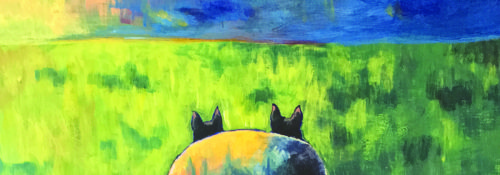
Little House on the Prairie: A Journey into America’s Westward Expansion
By Monica VanDerWeide, ’95
Beloved by generations of children for more than 80 years, the Little House on the Prairie series by Laura Ingalls Wilder holds a special place in the canon of classic children’s literature. While the stories in themselves are entertaining and delightful, they also offer an entry point from which to delve into discussions about the American frontier and Westward Expansion. Dr. Dedra Birzer, a lecturer in history at Hillsdale College, gave a presentation at the June 2019 Barney Charter School Initiative Teacher Training titled “Westward Expansion and the Little House on the Prairie.” She offered the following questions to help kindergarten through sixth-grade teachers frame class discussions about the Little House series.
- How does the perspective shape the story? Written in third-person limited narrative, the story is told through Laura’s perspective. “This is key for teaching this to young students,” Birzer said. For example, through young Laura’s eyes, readers see a whole continuum of reaction to the Native Americans, as well as the Indians’ reactions to the settlers encroaching on their land. Revealing the Indians’ feelings through the third-person limited narrative highlights Wilder’s “literary genius,” according to Birzer. “K-6 students can definitely pick up on these reactions,” she said. “It’s very much a part of the conversation about the role of the Indians in settling the West.”
- Why did the Ingalls family leave the abundant life they had to move to Indian Territory? The Ingalls family lived comfortably in Pepin, Wisconsin, with plenty of food stored up and family living nearby. It’s hard to imagine why they would want to leave that behind for the unknown. Birzer referred to this tension—this compulsion to leave one place for another—as the “push and pull” factor. What is pushing the family out of Wisconsin? What is pulling them to the unchartered Indian Territory?
- How does the family survive? According to Birzer, this question leads to many other questions. What does the family bring with them, and what do they leave behind? What are their prized possessions? What new skills do they need to learn in order to survive in their new environment? Talking about these questions, Birzer said, gives children the opportunity to reflect on what is different and what remains the same between Laura’s time and ours.
- What does the family get from the land? The land determines where the Ingalls family builds their house, what kind of house they build, and how they get their sustenance.
- What is the family willing to endure for a better opportunity? The Ingalls family faces a lot of danger—a near-drowning, wolves, fires, thieves, Indians, and malaria. Again, the “push and pull” factor comes into play for class discussions, according to Birzer. The repeated exposure to danger also illustrates another important undercurrent in the book: “There’s a juxtaposition of the family wanting to be independent but also realizing the necessity of community,” Birzer said.
- What are the aspects of shared humanity in the story? Laura’s descriptions of interactions between the settlers and the Indians—such as her desire to see a papoose, her fascination with Indian beads, her visit to the Indian campsite, shared meals, and the protective instincts that Pa and the Indian show toward their respective children—display shared humanity. Although they speak different languages, the Indians and the Ingalls family have more in common than one would think at first. There are also tensions in the story—settlers vs. Indians, settlers vs. settlers, and man vs. nature—that make us think about the universality of the characters’ humanity.
“Little House on the Prairie opens up so many discussions for K-6 students that they are very capable of pondering,” Birzer concluded. “Hopefully they can see through the eyes of Laura in thinking about Westward Expansion.”
Click here for a downloadable (PDF format) Little House on the Prairie poster to use in your classroom.